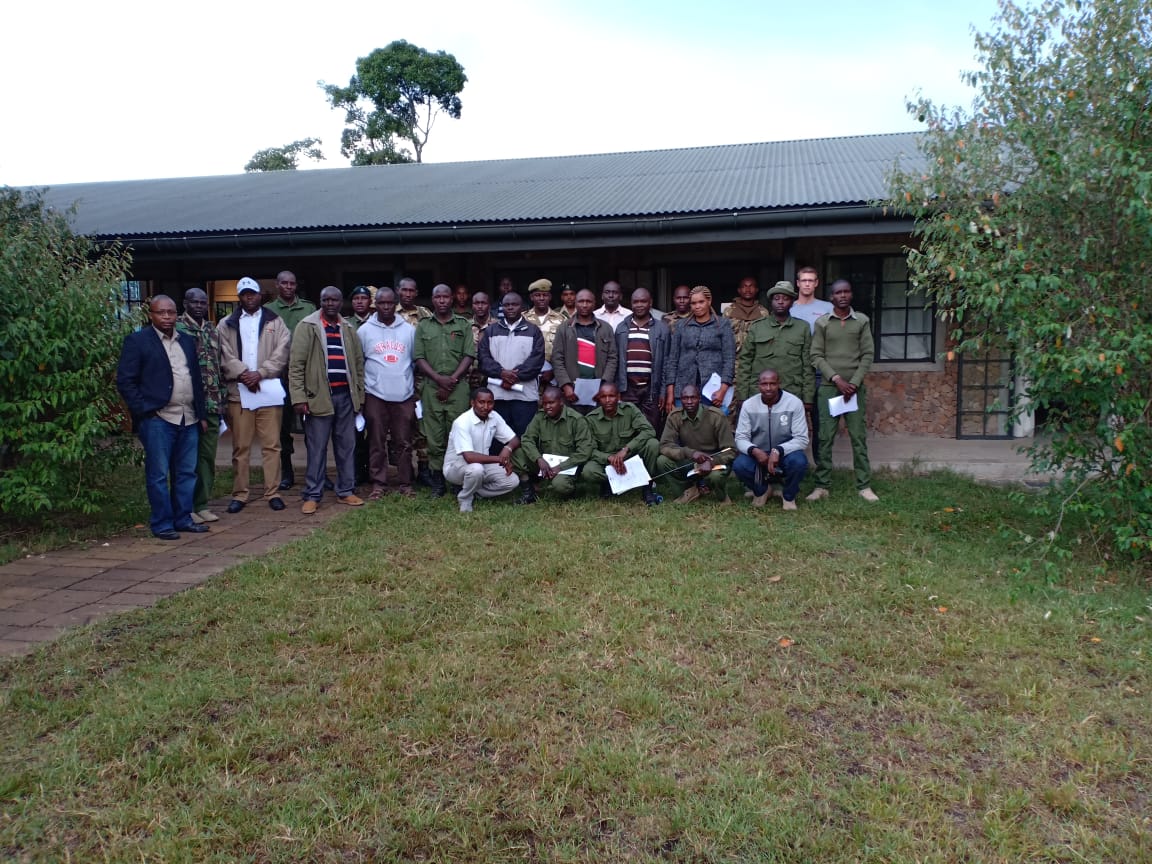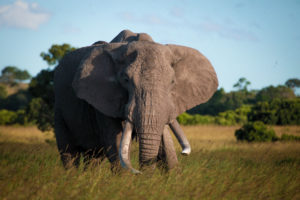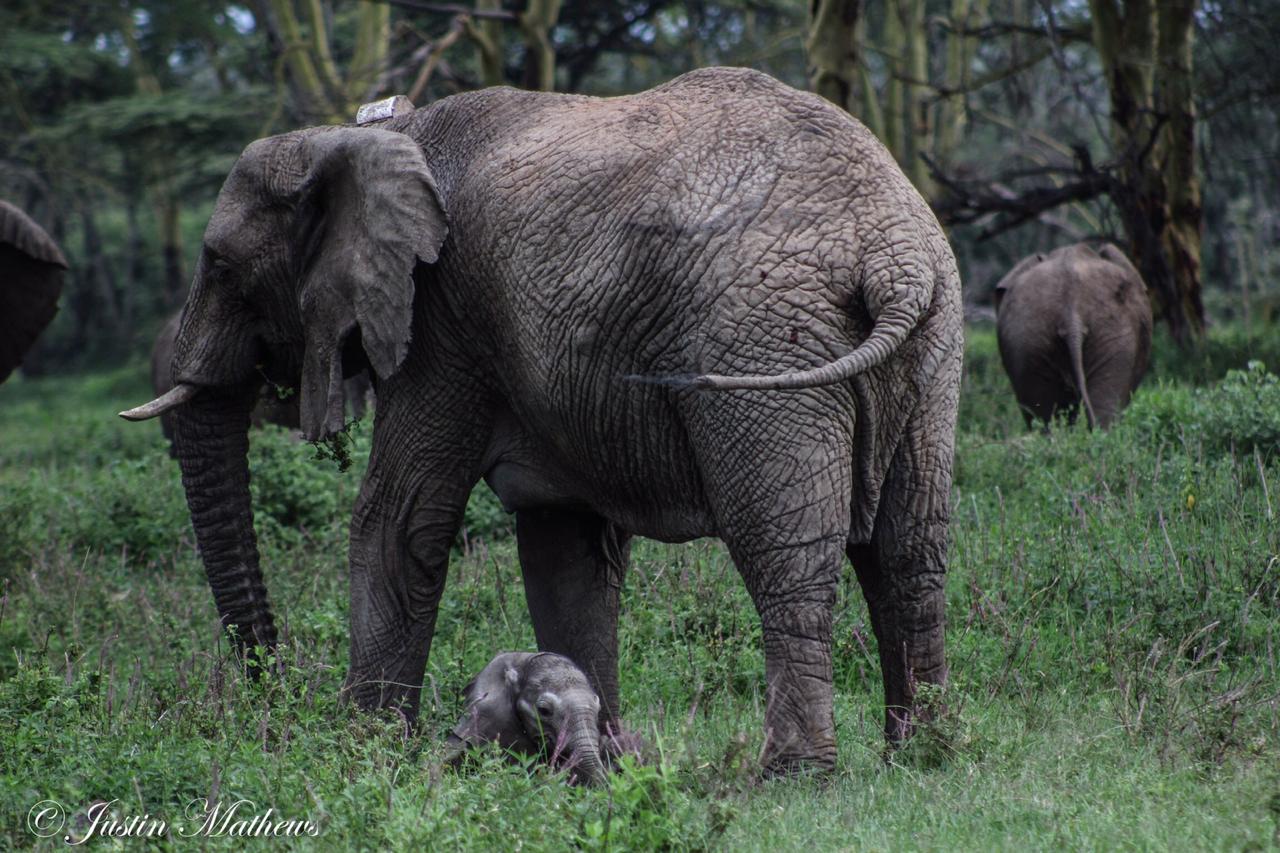The second quarter of 2019 proved very busy for both the MEP research team and MEP’s collared elephants. In April, MEP Director of Research and Conservation Dr. Jake Wall focused on setting up and running MEP’s own EarthRanger, a platform developed by Vulcan Inc. based in Seattle that extends the real-time monitoring system Jake developed with Save The Elephants (STE) during his PhD. EarthRanger integrates data-streams from a wide variety of sources that is then stored and accessed securely in a cloud database. EarthRanger has a web-app to help us visualize the data feeds in real-time and also to collect new information about events as they occur. Switching to EarthRanger as our primary data collection and storage tool will help MEP in the long-term in the goal of protecting elephants and their environment and will promote useful research, collaborations with other organizations and data-driven conservation.
Throughout the quarter, MEP’s research team continued to develop the MEP spatial database and include data like a hydrology layer to understand where water is located, a fundamental step to understanding the spatial distribution of elephants. MEP also mapped all mineral points and tourist lodges and have added these the MEP database and will focus on roads in July. In April, MEP launched the Njia tracking app with all of our ranger vehicles. Njia is meant to be a low-cost solution for collecting tracking data on all of our vehicles and can periodically synchronize data to a cloud-server. Njia was developed by Jake to help MEP collect relevant spatial data layers (e.g., roads, fences etc.). The data feed from Njia will link to EarthRanger to receive the information in near real-time.
It’s worth noting that a key objective of the MEP research agenda in 2019 – establishment of an elephant long-term monitoring team – is still looking for a patron. The MEP long-term monitoring program would increase the amount of demographic data we are collecting on the Mara elephant population with the employment of two Maasai women who would collect datasets and field information critical to our understanding of the Mara elephant population. The long-term monitoring team would need $77,200 in start up and running costs for 2019.
We had many very special visitors to MEP HQ this quarter. Starting with Dr. Iain Douglas-Hamilton in May to discuss ongoing collaborations with Save the Elephants (STE). STE has been at the forefront of elephant conservation and research for decades and helped to kickstart MEP’s own elephant tracking program. In June, we were happy to host Dr. George Wittemyer from Colorado State University. George has been studying elephants since the late 1990’s when he first characterized the Samburu elephant population. Since then George has published dozens of papers on everything from analyzing elephant movement using wavelets to determining the rates of poaching across the continent during the height of the most recent elephant poaching crisis. MEP also hosted a team from RESOLVE that are building an artificial intelligence (AI) based camera that uses a new processor developed by Intel for ‘edge analytics. The processor can run AI models in real-time to identify objects of interest within seconds. RESOLVE has harnessed this technology and combined it with a low-profile camera body and satellite modem that can be deployed in the field for months and remotely transmit only photos with either humans or wildlife in the photos. Known as TrailGuard, this will be a major breakthrough for camera trap technology as often a lot of false positives are triggered by a moving leaf or grass making it difficult to use camera traps in operational settings. We interfaced the TrailGuard cameras with MEP’s EarthRanger system and are ready to deploy them once they come off of the production line. In mid-May Dr. Lydia Tiller from the Elephants and Bees program in Tsavo visited MEP HQ. Lydia did her PhD work on human-elephant conflict in the Mara and will also be collaborating with MEP on our research.

The participants in the MIKE training hosted at MEP HQ in April.
In June we received a $15,000 grant from the Microsoft AI for Earth program to host a cloud-based server to collect aerial imagery and spatial data related to various machine learning and landscape change detection projects. We also received news from Esri at the end of June that they will be supporting MEP with free GIS software to support our conservation efforts. Esri is the world’s leading Geographic Information System (GIS) company and MEP is reliant on Esri products for analysis and cartographic outputs. We are delighted to receive this support from Esri!
 MEP received support from Paradise International Foundation for the protection of two collared elephants, Hugo (pictured left) and Hangzhou, for three years and on June 13, MEP and KWS, with KWS approval, successfully replaced Fred’s collar whose battery was due to expire. Fred is a large bull elephant that was originally collared in February 2013 and re-collared in November 2015. Fred is often found with other bull elephants Kegol and Hugo and has been known to crop raid from farms. The area of the ecosystem where he resides is changing fast and collaring Fred to ensure continuous data collection will be key for MEP’s operations and advocacy. Anotherexciting development for MEP collared elephants in June was that we have a new baby! Namunyak now has a one-month-old calf that was spotted with her in June and Hangzhou’s nine-month-old calf was also photographed and doing well.
MEP received support from Paradise International Foundation for the protection of two collared elephants, Hugo (pictured left) and Hangzhou, for three years and on June 13, MEP and KWS, with KWS approval, successfully replaced Fred’s collar whose battery was due to expire. Fred is a large bull elephant that was originally collared in February 2013 and re-collared in November 2015. Fred is often found with other bull elephants Kegol and Hugo and has been known to crop raid from farms. The area of the ecosystem where he resides is changing fast and collaring Fred to ensure continuous data collection will be key for MEP’s operations and advocacy. Anotherexciting development for MEP collared elephants in June was that we have a new baby! Namunyak now has a one-month-old calf that was spotted with her in June and Hangzhou’s nine-month-old calf was also photographed and doing well.

MEP collared elephant Namunyak and her one-month-old calf photographed by Justin Matthews.
MEP collared elephant Caroline’s movements in May were of note. She is one of MEP’s longest continually tracked elephants in the Mara ecosystem and has been residing in an area with many human settlements. MEP got a geo-fence alert that was triggered by her movements into areas of settlement. What we noticed this month was that Caroline was climbing a hill in the early morning, staying on the hill throughout the day, then coming down the hill to drink at night, which is behavior indicative of elephants living in a stressful state in a human-dominated landscape. Although there is adequate vegetation on the hill where Caroline and her herd reside during the day, it costs an elephant 2,500 percent more energy to climb one vertical meter compared to traveling one meter horizontally and so frequent hill-climbing is not energetically profitable for an elephant. We do not know Caroline’s motivation for being in this area, but her movements have shifted out of her normal pattern of behavior and her use of the hill for daytime concealment and the night-time drinking indicate she was feeling under threat from the human factors in that area.

Collared elephant Caroline’s movements.
The data collected from MEP’s elephant collars is the single best indicator for identifying elephant density hotspots, defining critical habitat and corridors, and illustrating elephant movements to target audiences. The ongoing collection of data and further analysis must continue to provide the evidence underpinning the communications and advocacy efforts of the organization to protect this critical habitat into the future. Not only for elephants, but all wildlife that are represented by this umbrella species. To support MEP’s core elephant monitoring and data collection initiative is $172,000 a year.


